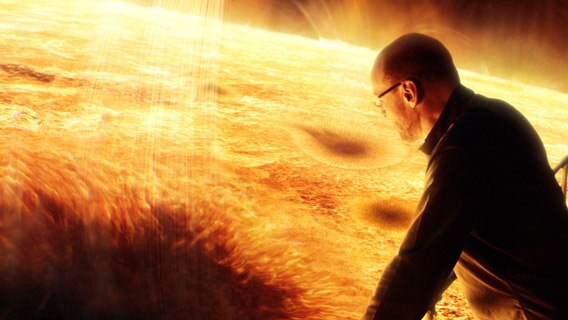Create a free profile to get unlimited access to exclusive videos, sweepstakes, and more!
“Sun Storm” Airs on Discovery Channel Tonight, Dec. 30

Iâm fascinated by the Sun. As an astronomer, I love the idea of being able to study a star up close, where we can watch it in high-resolution and on both short and long time scales (also, I appreciate being able to observe it during the day rather than having to stay up all night).
As a human, I know itâs the source of light and heat for our planet, and is a key to life itself.
But itâs a star, with all that implies: Itâs massive, energetic, and prone to throwing the occasional hissy fit. And when it does, the scale is awe-inspiring.
All of this is why Iâm excited to let you know that Iâm hosting the Discovery Channel TV show âSun Stormâ for their series âCuriosityâ. The show airs tonight, Sunday, December 30, at 9:00 p.m. Eastern time (check your local listings, etc. etc.), and is all about how the Sun makes its tremendous energy, and how that sometimes comes in the form of epic solar tantrums flung out into space.
Hereâs a promo clip:
A second clip is also online, too. A couple of reviews are up as well; one on Evil Scientist and another on TV By The Numbers.
Solar storms are a concern of mine; while they canât hurt us directly on Earth (sorry, folks, you wonât turn into the Incredible Hulk after a big flare), they can damage satellites and, more worrisomely, cause massive power outages. The details are complicated, but essentially a big solar storm can launch billions of tons of subatomic particles toward Earth. These interact with our planetâs magnetic field, which in turn can create massive currents of electricity that surge into our power grid. If the effect is large enough it can overpower the grid, causing transformers to blow and creating widespread power outages. This happened in March 1989 in Quebec, and a big storm could do more damage.
While this threat isn't necessarily immediate, itâs something our governments and power companies should be taking very seriously. I took it seriously enough to write about it in my book Death from the Skies! (note: affiliate link). And I know a lot of solar astronomers who fret about it as well. When I wrote the Sun chapter, I took pains to create a good balance between talking about the dangers without being overly alarming. I think âSun Stormâ also strikes this balance (which can be harder for a TV show, since the addition of high-res CGI visuals makes it more visceral).
Solar storms are a real problem, and my hope is that bringing attention to it will raise awareness and make it an issue people take seriously. There are ways to avoid the worst of the damage; for example, by adding more capacity to our power grid, which right now is carrying about as much current as it can (which is why induced currents are bad; they overload the wires). Another is to for power companies to invest in things like building more transformers to replace those blown by an overload, and also to investigate other technologies that can reduce the problem of induced currents induced by solar storms.
Solar storms and asteroid impacts are the only two realistic threats that come from space that have any real chance of doing damage to humanity and our civilization. But the good news is that they are also the two we can actually mitigate. We just have to choose to do so. It will take time and cost a lot of money, of course, but if we wait until after a big storm, the cost could be much higher.
All of this and more will be discussed on âSun Stormâ. I hope you watch it, and I hope you enjoy it!
[Update: In this article I had originally refered to the name of the show as "Solar Storms", which I have fixed. When we were filming it, the show had the temporary title of "The Sun" and in my notes I had written down "Solar Storms" as a final title. However, in the end neither was used. My apologies for any confusion. Including my own!]


























